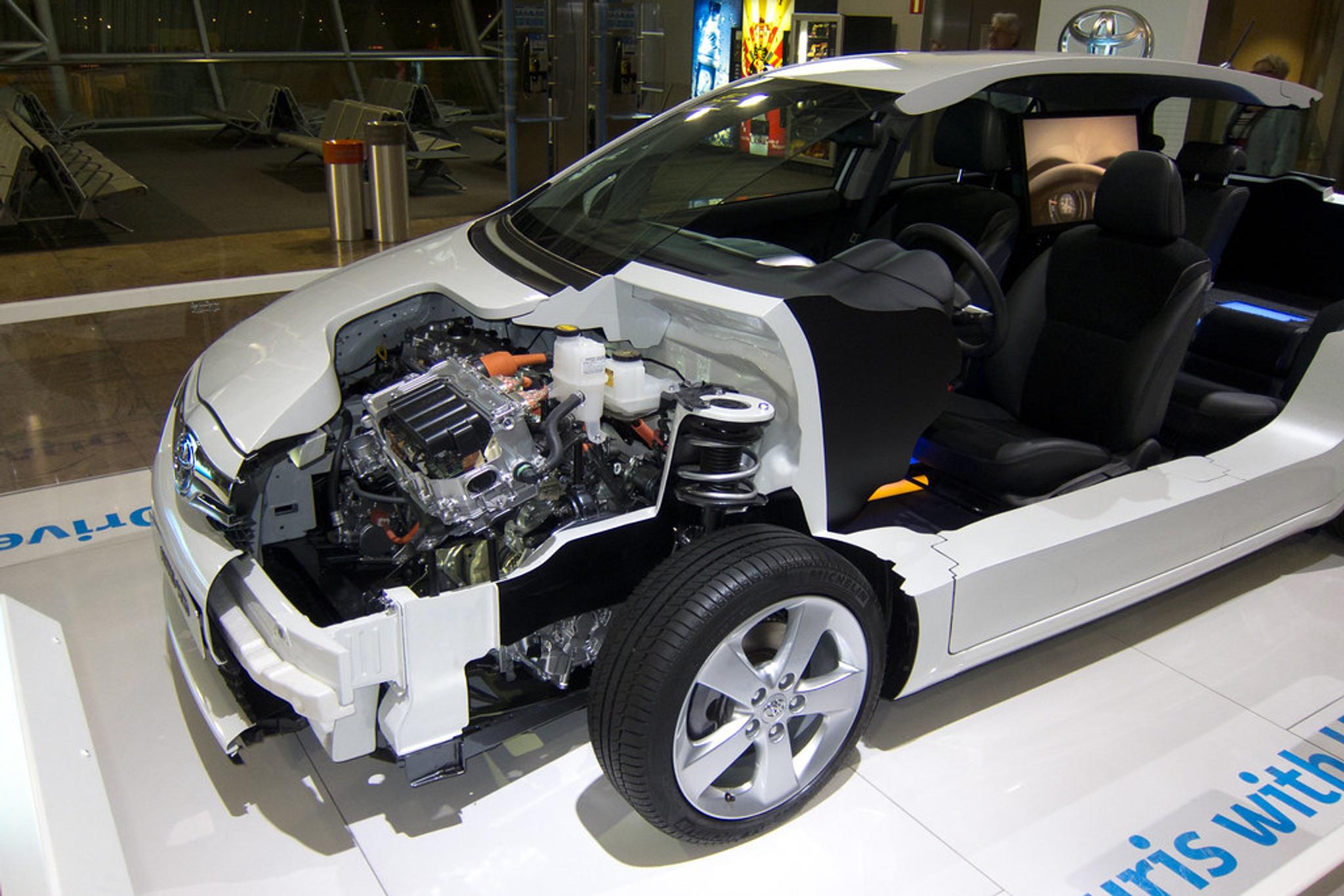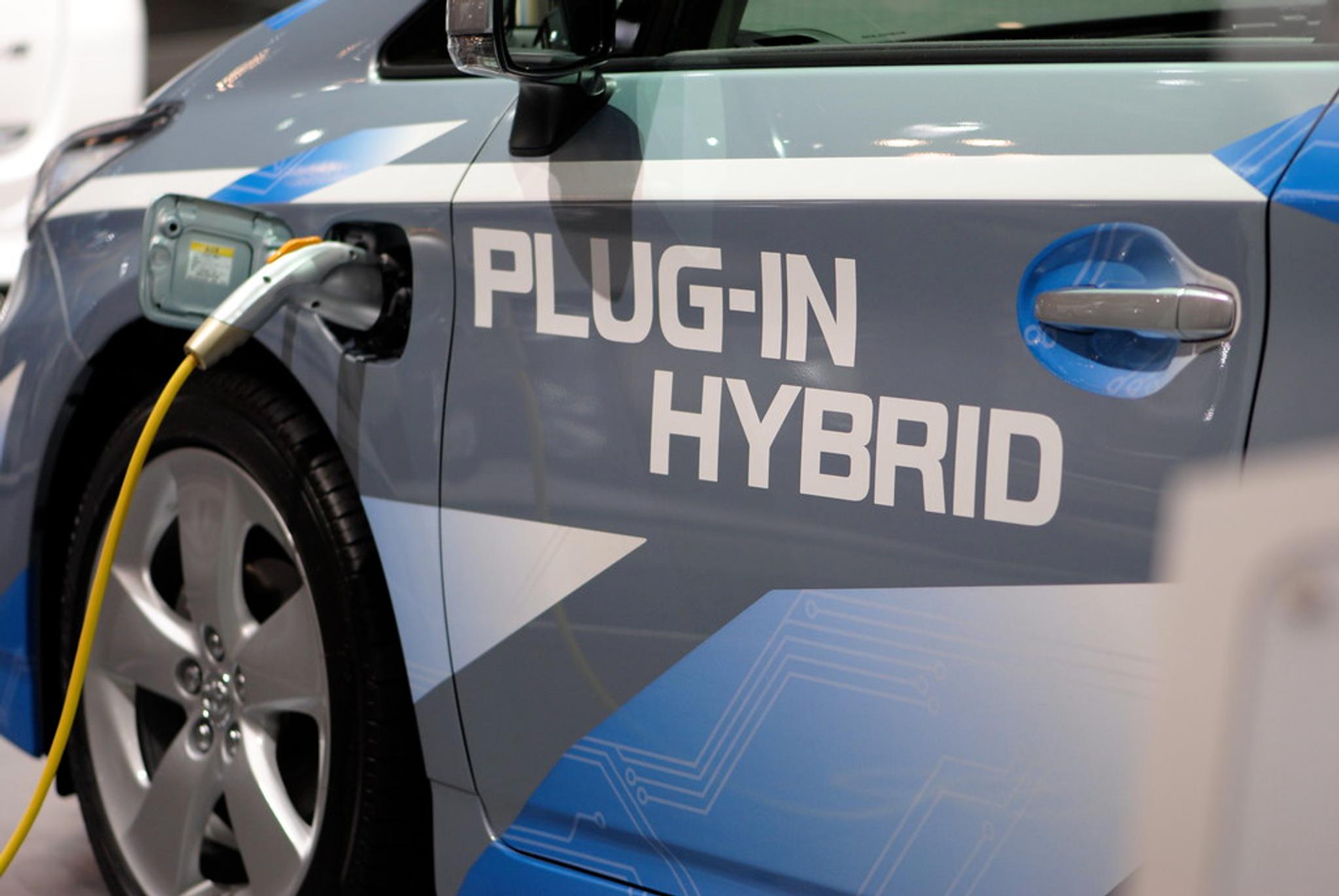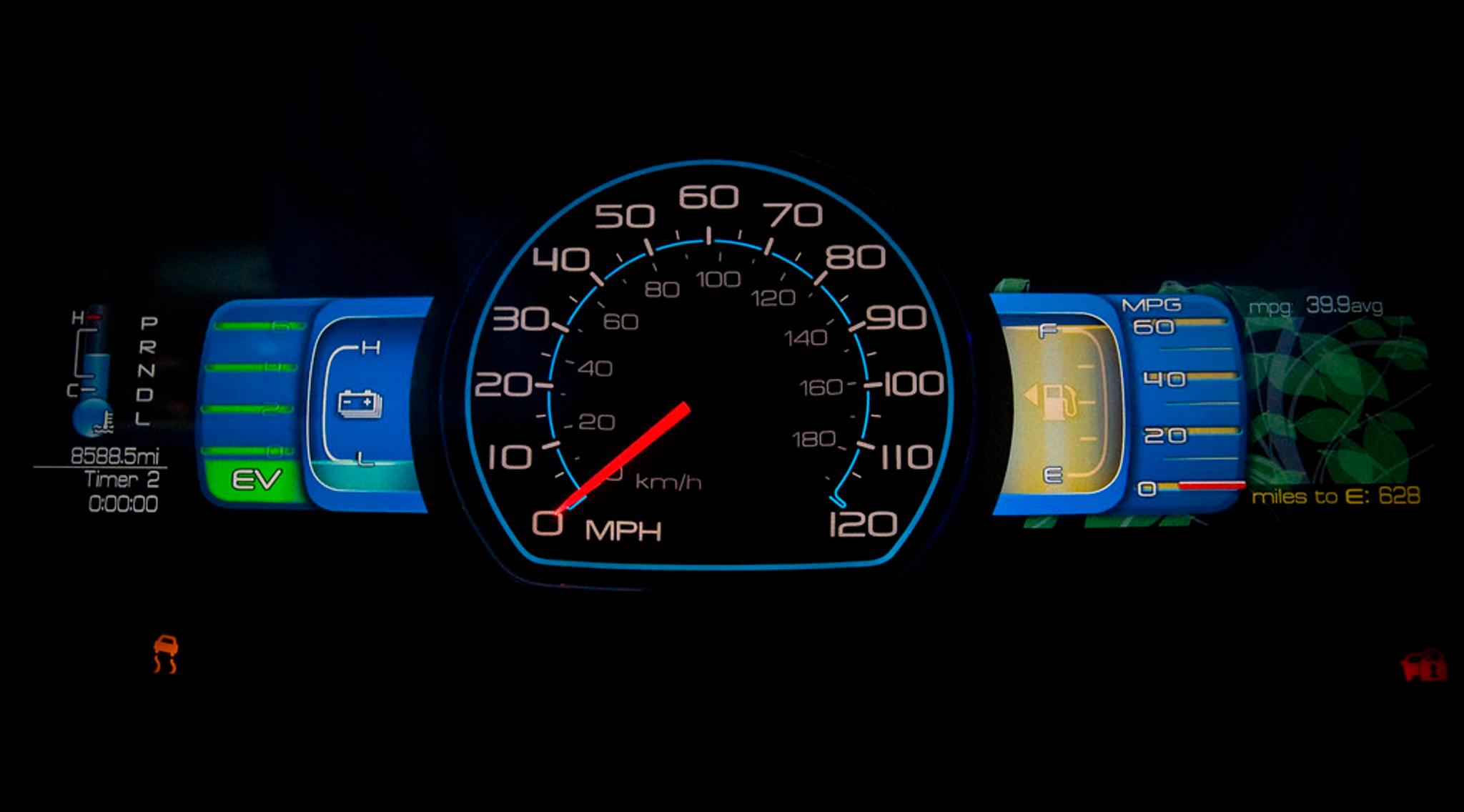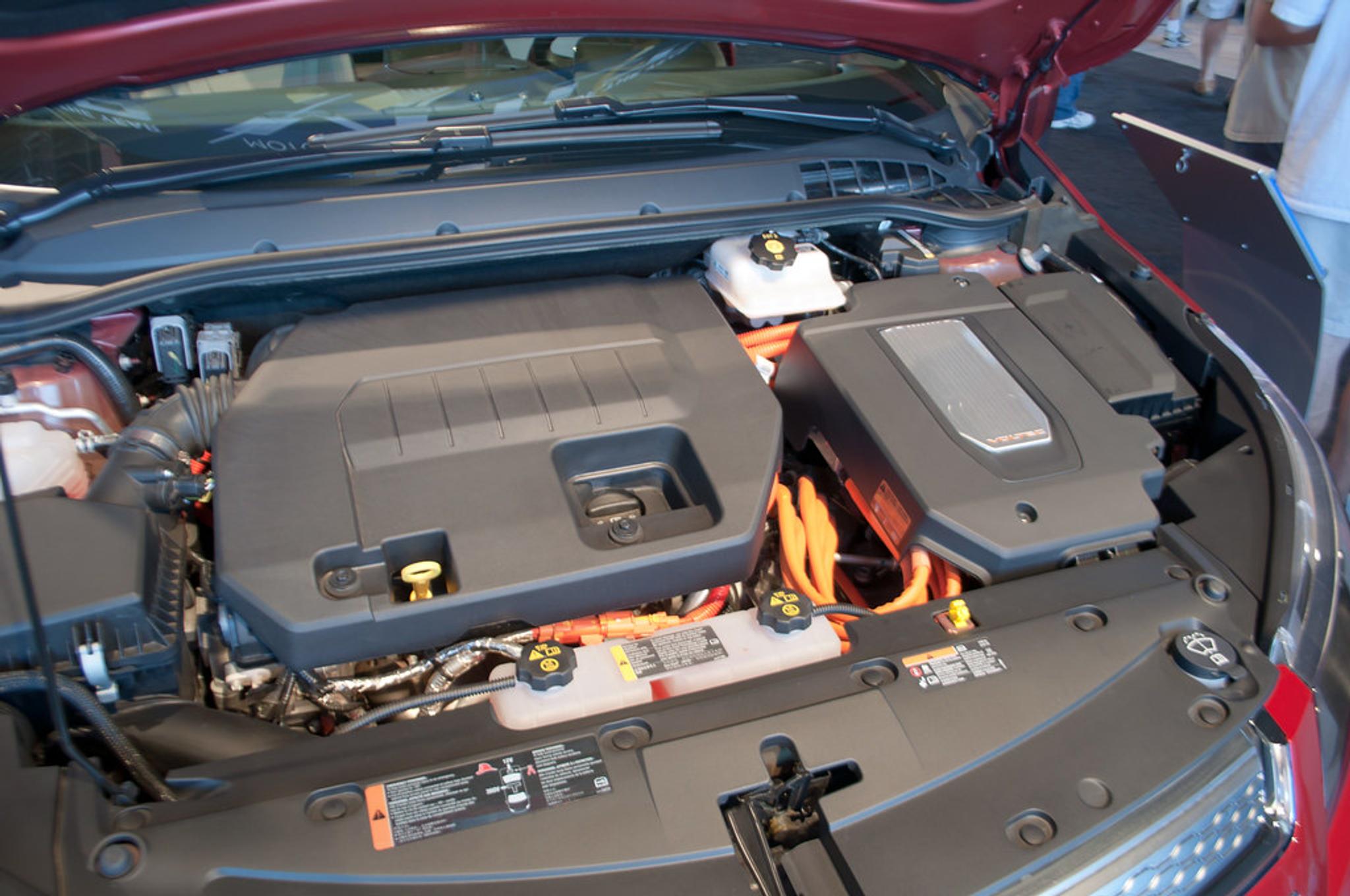Understanding hybrid car consumption

If you want to reduce fuel consumption to a minimum, an electric car seems like a way to go. However, hybrid electric vehicles (HEVs) are a more logical choice for many people, as they cost less and allow you to avoid range anxiety.
While HEVs are much more economical than gasoline or diesel vehicles, the difference in their fuel consumption varies greatly depending on everything from how a particular hybrid car works to the tire pressure, making it challenging to tell the exact fuel consumption figures.
So how close are official fuel consumption figures to the real world?

Looking for a reliable car?
A well-maintained and undamaged car is the most reliable! Check any VIN code to make sure you're not buying a wreck:
How do hybrid cars work?
A vehicle is considered a hybrid when it combines an internal combustion engine with at least one electric motor and a battery. Since hybrid electric vehicles have 2 power sources, they use them accordingly.
For instance, if you’re cruising at low speeds, a hybrid will mostly use an EV mode, while an internal combustion engine is used when more power is needed during acceleration and while speeding.

One of the disadvantages of hybrid cars is their complexity. They have all of the components a conventional car has, plus most of the systems from an electric car, including a battery, a DC/DC converter, an electric generator, and an electric motor.
This may look like a recipe for a very unreliable machine, but hybrid cars are actually among the most reliable cars for two reasons: they’re usually based on models that have been on the market for a few years, and the strain is distributed between an internal combustion engine and an electric motor, extending the life of both.
Different types of hybrid cars
A hybrid vehicle’s fuel economy strongly depends on its type. Hybrids are mainly divided into three types: a mild hybrid, a full hybrid, and a plug-in hybrid (PHEV).
- Mild hybrids save fuel by turning off the engine while it’s idling at the traffic lights, some also turn it off while coasting. They can’t run on electricity alone and have a very small additional electric motor that replaces a starter motor.
- Full hybrids are often the best option because they don’t require charging and their hybrid system is fully automatic. Most full hybrid vehicles have an additional electric motor and a battery that provides an all-electric range of around 1-2 miles.
- Plug-in hybrid electric vehicles are the most expensive because they have a much larger battery and more powerful electric motors that provide a range of around 30-40 miles. You can charge them at home or in public charging stations and drive them without using an internal combustion engine at all.

Hybrid cars can also be divided by powertrain configurations. In the most common parallel and power-split hybrid electric vehicles, the engine and an electric motor are connected to a drivetrain, meaning they can work in combination or independently.
A series hybrid is a less common type where an engine isn’t connected to the drivetrain and is used only to charge an electric motor. Series hybrids usually don't have much power and are more suitable for city driving.
How hybrid cars conserve energy and improve fuel efficiency?
Since hybrid electric vehicles are meant to be fuel efficient, there are several systems contributing to this:
- Regenerative braking. Most hybrid electric vehicles have a regenerative braking feature that captures the energy of a slowing vehicle and stores it in a battery.
- Automatic start-stop system. We spend dozens of hours sitting in traffic jams each year, wasting large amounts of fuel while idling. The start-stop system turns the engine off at traffic lights and in traffic jams.
- Aerodynamics. Designers take aerodynamics very seriously when making hybrid vehicles, making the grille, wheels, and other exterior bits sleeker.
- Smaller engines. Some types of hybrid electric vehicles have very small engines because they’re supported by an electric motor.
- Smart energy management. Activating and deactivating an electric motor at the right time plays a significant role in fuel efficiency.
Some drivers deactivate various fuel-saving features because of inconvenience. For instance, an automatic start-stop system is one of the most commonly disabled features because sitting in traffic with an engine off is uncomfortable for some drivers.
Also, sometimes hybrid car buyers don’t know how to recharge a hybrid car, therefore, they brake excessively and regenerative braking doesn’t kick in often enough.
How accurate official fuel consumption figures are?
All car manufacturers must provide official fuel consumption figures together with each model, which should give potential buyers an idea of how fuel-efficient a car is. They must perform specific tests, mimicking real-world conditions.
Unfortunately, the official fuel consumption figures often are way too optimistic because of mild test conditions.
Automakers from around the world must measure fuel efficiency by performing an official test. Currently, there are 2 main fuel emission tests: the Environmental Protection Agency (EPA), and the Worldwide Harmonised Light Vehicle Test Procedure (WLTP) that replaced the New European Driving Cycle (NEDC) standard in 2017.
The NEDC standard was the least accurate because it was last updated in 1997 and cars were tested in nearly ideal lab conditions. Moreover, it didn’t take into account powerful infotainment, safety tech, and other features most modern cars have.
The current WLTP standard creates an environment that is closer to real-world conditions, such as testing cars at 4 different speeds and taking a car’s weight, aerodynamics, and equipment into account.
Also, the new testing procedure was extended from 20 to 30 minutes, making consumption figures more accurate. However, they’re still far from real-world fuel consumption and CO2 emissions because the test mimics a driver that desperately tries to drive economically, therefore, acceleration is extremely slow and most electronics are turned off.

While the WLTP standard is European, official fuel consumption figures in the US are the most accurate thanks to their strict EPA tests that are more motorway-based. The EPA figures are around 22% higher than the WLTP and are much closer to real-world fuel consumption.
The actual fuel efficiency of a vehicle depends on many factors, that’s why figures of these tests are always advertised as average. For instance, you’ll burn significantly more fuel by driving short distances during winter than on long road trips during summer. Also, even a running AC increases your fuel consumption by 8-10%.
Tracking and improving hybrid car consumption
Maintaining your car and tracking its fuel consumption is very important because even an underinflated tire can increase your fuel usage by up to 10%. This is especially important for hybrid electric vehicle owners, as conservative driving habits lead to an electric motor kicking in more often and saving fuel.
How to reduce consumption of a hybrid car
You don’t need to buy a smaller car with a smaller engine to improve fuel economy. There are several great ways to reduce fuel consumption, especially for hybrid electric vehicles:
- Drive more efficiently. Don’t accelerate excessively and let the regenerative braking do its job instead of slamming on the brakes. According to the Energy Savings Trust, slowing down from 70 mph to 60 mph reduces fuel consumption by 15%, so try to take it slower.
- Make sure hybrid batteries are charged. No matter what type of hybrid you’re driving, make sure the batteries get enough charge. Let the regenerative braking do its job, and make sure your plug-in hybrid is fully charged before driving somewhere.
- Empty your trunk. Weight has an enormous impact on fuel consumption, therefore, automakers even replace spare tires with small tire repair kits to lose a few pounds. Make sure there’s no unnecessary stuff inside your trunk.
- Plan your trips. Avoid making multiple trips per day. If you’re driving to a friend’s house, you can also go shopping and stop at the gas station on the way.
- Use the sport mode sparingly. Most hybrids have eco, normal, and sport driving modes. Use the sport mode only when you need a burst of power because it sharpens shifting and minimizes the use of an electric motor.
You may think that these tips don’t matter much in terms of fuel efficiency. However, a few simple changes in your driving habits can save up to 40% of your fuel.
Hybrid car maintenance and how it affects consumption
Maintenance is another key aspect of hybrid car fuel efficiency.
Online forums are full of discussions about the economy of various hybrid electric vehicles, and they often get heated because the statements of the same car owners differ. While fuel consumption figures vary by driving style, they also depend on a car’s condition.

Old filters, clogged fuel injectors, underinflated tires, and even missed oil changes can affect the fuel efficiency of a hybrid vehicle.
There’s also a battery that provides energy to an electric motor, therefore, the more worn a battery is, the smaller the all-electric range.
How long the batteries in a hybrid car last depends on its maintenance, climate, and other factors. However, it should exceed at least 100,000 miles.
Consumption differences in plug-in hybrids and full hybrids
Most plug-in hybrid vehicles can be used as full hybrids because they have a combined mode, also known as a charge-sustaining mode. In that case, the difference between the fuel consumption of PHEV and full hybrids is very little.
However, a plug-in hybrid doesn’t need any fuel while in electric mode. If your daily commute is short, a fully charged PHEV may be able to get you everywhere without using an internal combustion engine.
Hybrid car consumption tracking tools and apps
Tracking your car’s maintenance and fuel consumption is as important as keeping track of your finances.
Some gas stations have their own apps that allow you to track how much you spend on fuel each month. You can also collect the receipts and write down the expenses in a notebook. However, this isn’t the most convenient option, as you can find an app for almost any task you can imagine.
One of the most convenient car ownership apps is carOne – a tool that helps you track your fuel consumption, maintenance, washing, parking, and other tasks that are relevant to most drivers.
It’s very simple to use and free to download, so try and see if this helps to cut your expenses.
Advantages and disadvantages of different types of hybrid cars
Hybrid car advantages and disadvantages aren’t the same for everyone. The three main types of hybrid cars offer different features, therefore, picking one that best meet your needs is essential.
Mild hybrids
Advantages:
- Low price
- Lightweight
- Start-stop feature
Disadvantages:
- Only up to 15% more efficient than conventional cars
- Doesn’t run on electricity alone
- Pollute more than other hybrid vehicles
Full hybrids
Advantages:
- Use up to 30% less fuel than conventional cars
- Have a few miles of all-electric range
- Very eco-friendly
Disadvantages:
- Expensive
- Complicated maintenance
- Potential battery issues
Plug-in hybrids
Advantages:
- 30-40 miles of all-electric range
- Can be used as an EV
- No range anxiety
Disadvantages:
- The most expensive type of hybrid vehicle
- Need access to a charging station
- Poor fuel economy when using the engine
Access to charging infrastructure
One of the biggest disadvantages of plug-in hybrids and electric vehicles is that they have to be charged regularly. This shouldn’t be a problem if you have your private driveway, but the situation is much worse for those living in apartments, as they heavily depend on public charging infrastructure.

You can find multiple public charging stations in most cities and charge your plug-in hybrid or an EV while you’re working, shopping, or going to a cinema. However, being tied to public charging stations means that you’ll have to leave your home to charge your car, some stations may be occupied, and the price of electricity is higher than at home.
It’s very important to consider this before buying a plug-in hybrid, otherwise, you may use it mostly as a conventional gasoline vehicle.
Overall, hybrid electric vehicles are more economical and environmentally-friendly than their diesel and gasoline counterparts, but understanding how much fuel a hybrid vehicle consumes and choosing the right type of hybrid is vital if you want to get the most out of it.

Check your VIN
Avoid costly problems by checking a vehicle's history. Get a report instantly!
